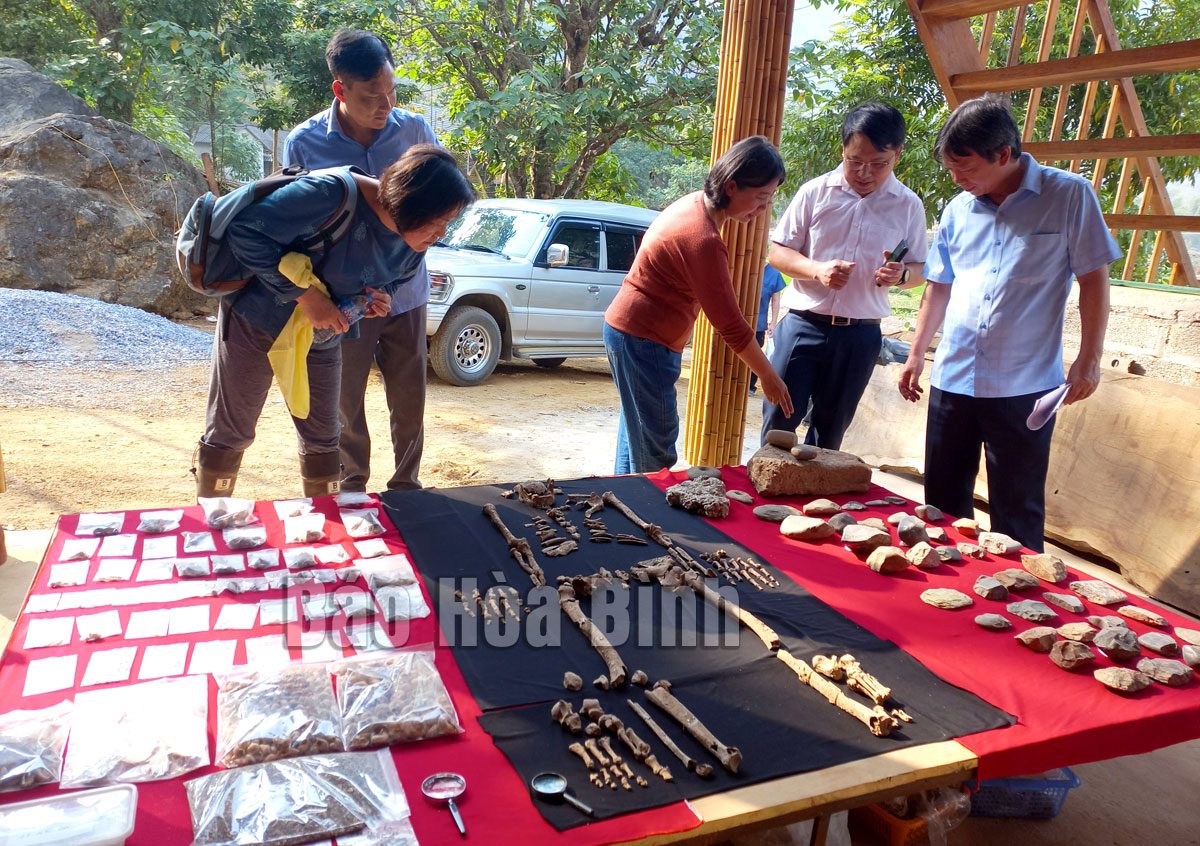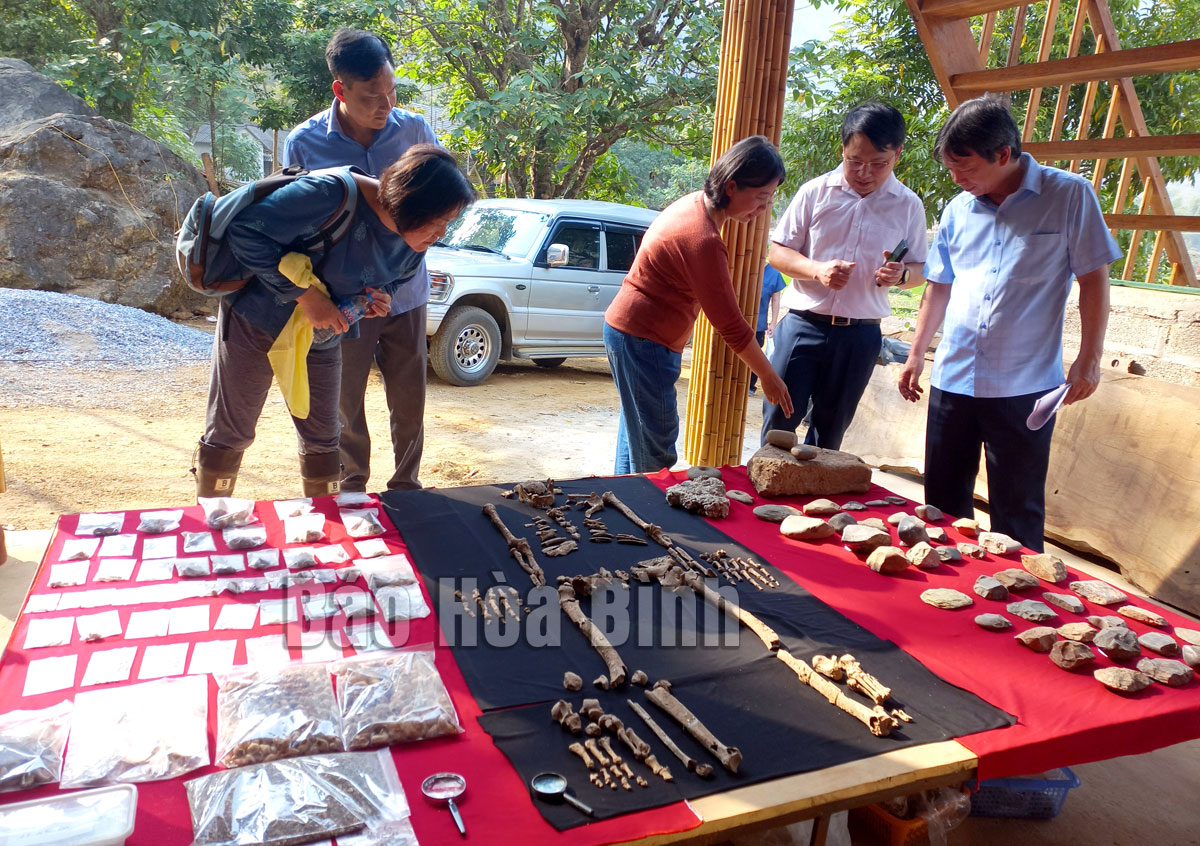



Some stone artifacts, animal fossils and human remains have been unearthed at the stone roof of Phong Quyen in Mai Hich commune (Mai Chau).
The stone roof of Phong Quyen in Mai Hich commune has been announced with important survey results by by the domestic and foreign archaeologists. The stone roof of Phong Quyen has been investigated, discovered and explored since 1976, and they have collected 22 stone tools, 13 pieces of cobblestone and 88 animal bone specimens that have been studied and published with the dating results, especially there is a fragment of the upper jaw with the teeth of a bamboo bear and the teeth of an ancient elephant. In July 2021, the exploration hole continued to be opened, during the exploration, 2 burial relics were discovered, in addition, animal remains, stone artifacts were unearthed...
In March 2023, the research team of the Institute of Archeology collaborated with the scientists from Japan, the Department of Culture, Sports and Tourism of Hoa Binh province, the Department of Culture and Information of Mai Chau district to continue carrying out the exploration and expanding the research the previously excavated sections. During the excavation process from March 6 to 23, the research team obtained 17 coal samples in reliable stratigraphy, corresponding to different stratigraphic layers. According to the Institute of Archeology and Japanese experts, this is the most intact cultural layer in Vietnam that has been discovered so far, and it is a particularly valuable archaeological site for further research. "The discovery and excavation of the relics of Phung Quyen stone roof in the area is a particularly important discovery for the commune. In the coming time, when it is recognized as a national relic, the commune will exploit Phung Quyen stone roof to serve tourists visiting and learning about the local culture and history,” said Mr. Vi Van Viet, the Vice Chairman of the People's Committee of Mai Hich Commune.
Previously, Khoai cave in Xam Khoe commune was also excavated by archaeologists and they discovered the remains of ancient Vietnamese people. The results of the archeological research and excavation in the communes and the town in Mai Chau district have received the special attention from scientists and the public, contributing more historical data to the educational activities, clarifying the process of formation and natural and social development of Hoa Binh Culture. These results have also created the opportunities for Mai Chau to build more valuable cultural tourism products, serving the diverse needs of visiting, studying and researching of people and tourists.
Mr. Ngan Van Tuan, the Head of the Culture and Information Department of Mai Chau district, says: From being deeply aware of this issue, the District’s Culture and Information Department has coordinated with the relevant agencies to promote the management work, preserving and promoting the value of the archaeological relics, meeting the requirements of both preserving the integrity of the monuments to serve research and study, and becoming an attractive sightseeing spot. In particular, the district authorities regularly propagate to the people about the cultural value of the relics in the area. In particular, it is necessary to protect and promote the value of the archaeological relics and develop the plans for the protection and sustainable conservation of the archaeological relics. The Culture - Information Department has advised the District’s People's Committee to establish the relics management board at the district’s and commune’s level; planning and preserving the cultural heritages to firmly ensure tourism development; investing in infrastructure of the relic sites, calling for socialization to improve the traffic system of the relic sites, creating the favorable conditions for tourism; stepping up the promotion of tourism associated with the cultural heritage in order to well exploit the archaeological tourism; developing human resources for the conservation and promotion of the the value of archaeological relics in association with tourism development at the relic sites.
As a result, the exploiting the archaeological relics in tourism activities not only promotes the value of the relics effectively, but it also contributes to the economic development of the district. In order to develop tourism based on the special cultural values of the archaeological relics to be sustainable, in the coming time, Mai Chau district will continue paying attention to and do well the conservation of the existing archaeological relics in the region.